Table of Contents
Guide
Page List

Copyright 2022, 2018, 2013, 2008, 2000, 1993, 1987, 1971 by Kaplan North America, LLC, d/b/a Barrons Educational Series, Inc. All rights reserved under International and Pan-American Copyright Conventions. By payment of the required fees, you have been granted the non-exclusive, non-transferable right to access and read the text of this eBook on screen. No part of this text may be reproduced, transmitted, downloaded, decompiled, reverse engineered, or stored in or introduced into any information storage and retrieval system, in any form or by any means, whether electronic or mechanical, now known or hereinafter invented, without the express written permission of the publisher. Published by Kaplan North America, LLC, d/b/a Barrons Educational Series 1515 W. Cypress Creek Road Fort Lauderdale, FL 33309
www.barronseduc.com ISBN: 978-1-5062-7119-4 10 9 8 7 6 5 4 3 2 1 Kaplan North America, LLC, d/b/a Barrons Educational Series, Inc., print books are available at special quantity discounts to use for sales promotions, employee premiums, or educational purposes.
For more information or to purchase books, please call the Simon & Schuster special sales department at 866-506-1949.
CONTENTS
This book is designed around a simple principle: information is more easily assimilated when you have context. Words Organized by Theme Rather than studying random or alphabetized lists of words (which are quite arbitrary when it comes to how words are related), in this edition the words are organized into lists based on common concepts or themes. Themes are noted on the top right of the page. This should, on its own, make the words easier to retain. For example, if you forget what
languid means but remember that it belongs to the list of words related to
sloth, youll know that it probably has something to do with laziness or lacking energy.
This way of organizing words affords a few study options. For example, you can study related groups of words like speech, expression, and writing or opposite pairs of words like success and failure to build ever larger frameworks of context. A natural consequence of organizing words by common meaning is that you will encounter many words with similar or identical meanings. So, while working through exercises, do not be disturbed by the fact that while you used one word to answer a question, a synonymous word is listed as the answer. If your answer is synonymous with the correct answer, both answers are correct! Notable Roots Another feature of this book is the list of notable roots that follows each days words. This includes roots, prefixes, and suffixes found in your vocabulary words that can also be found in other words.
This gives you yet another context for study: groups of words that share common roots. Weekly Study Program The book is organized into 46 weeks of study, each containing four lists of six words to be studied during the week and a series of review exercises for the fifth day (or weekend if you prefer). Review exercises not only cover that weeks words, but also periodically review words learned on previous weeks. This brings up an important pointsuccess with vocabulary study comes through repetition. Each days words should be reviewed a few times throughout the day, and past words need to be studied and used in order for them to stick.
| a | apple, bat |
| age, lace |
| alms, father |
| r | arm, jar |
| b | bag, sob |
| ch | chill, such |
| d | done, said |
| around, waken, pencil, demon |
| e | elk, met |
| ease, see |
| er | air, wear |
| r | urn, worth |
| f | feel, stiff |
| g | gone, big |
| h | him, behind |
| hw | which, whale |
| i | inch, pin |
| ir | ear, cheer |
| ivy, hide |
| j | just, enjoy |
| k | kin, talk |
| l | lose, hurl |
| m | mice, cram |
| n | not, into |
| song, ring |
| o | ox, rot |
| open, blow |
| all, bought |
| i | oil, boy |
| r | ore, cord |
| ou | owl, mouse |
| p | pest, cap |
| r | red, tree |
| s | spell, best |
| sh | shrug, crash |
| t | time, act |
| th | think, teeth |
| TH | this, breathe |
| u | bull, foot |
| ur | sure, pure |
| ooze, cute |
| up, month |
| v | vast, have |
| w | wish, squeak |
| y | youth, few |
| z | zoo, buzz |
| zh | genre, pleasure |
| denotes separate syllables |
NEW WORDS
astute - stt
surmise sur - mz
acuity - ky - i - t
proffer pro - fr
probity pr - bi - t
prudence pr - dins
Notable Roots: mis = send out; ac = sharpness; prob = worth, goodness READING WISELY An
astute reader can
surmise the logic and general meaning of a text without necessarily being influenced by it.
She has the mental acuity to separate fact from opinion. She does not shun the latter but instead weighs proffered insights according to the probity of the writer as well as the degree to which subjective views conform with her experience, values, and prudence. Sample Sentences: Use your new words in the following sentences. Occasionally, it may be necessary to change the ending of a word (e.g., indiscriminate to indiscriminately). .The mayors business dealings left his ________________ open to question. .________________ is the hallmark of a sound investment strategy. .Above all, a hiring manager must be a(n) ______________ judge of character. .The professor ________________ the following advice: choose a well-researched topic. .From his demeanor, Beth _______________ that her brother wished to be left alone. Definitions: Now that you have seen and used the new words in sentences and have the definitions on the tip of your tongue, try to pair the words with their meanings.

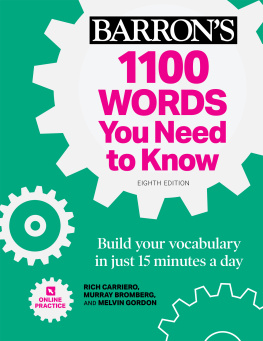

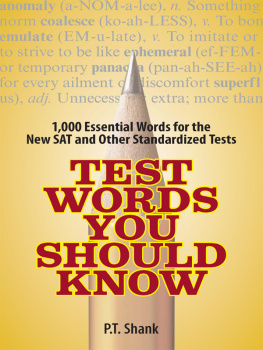
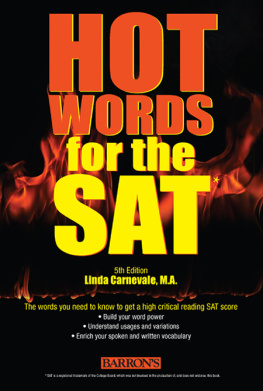

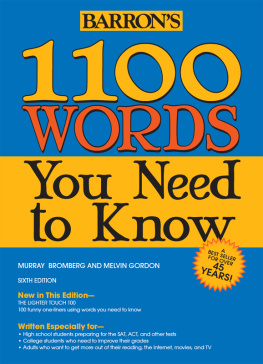

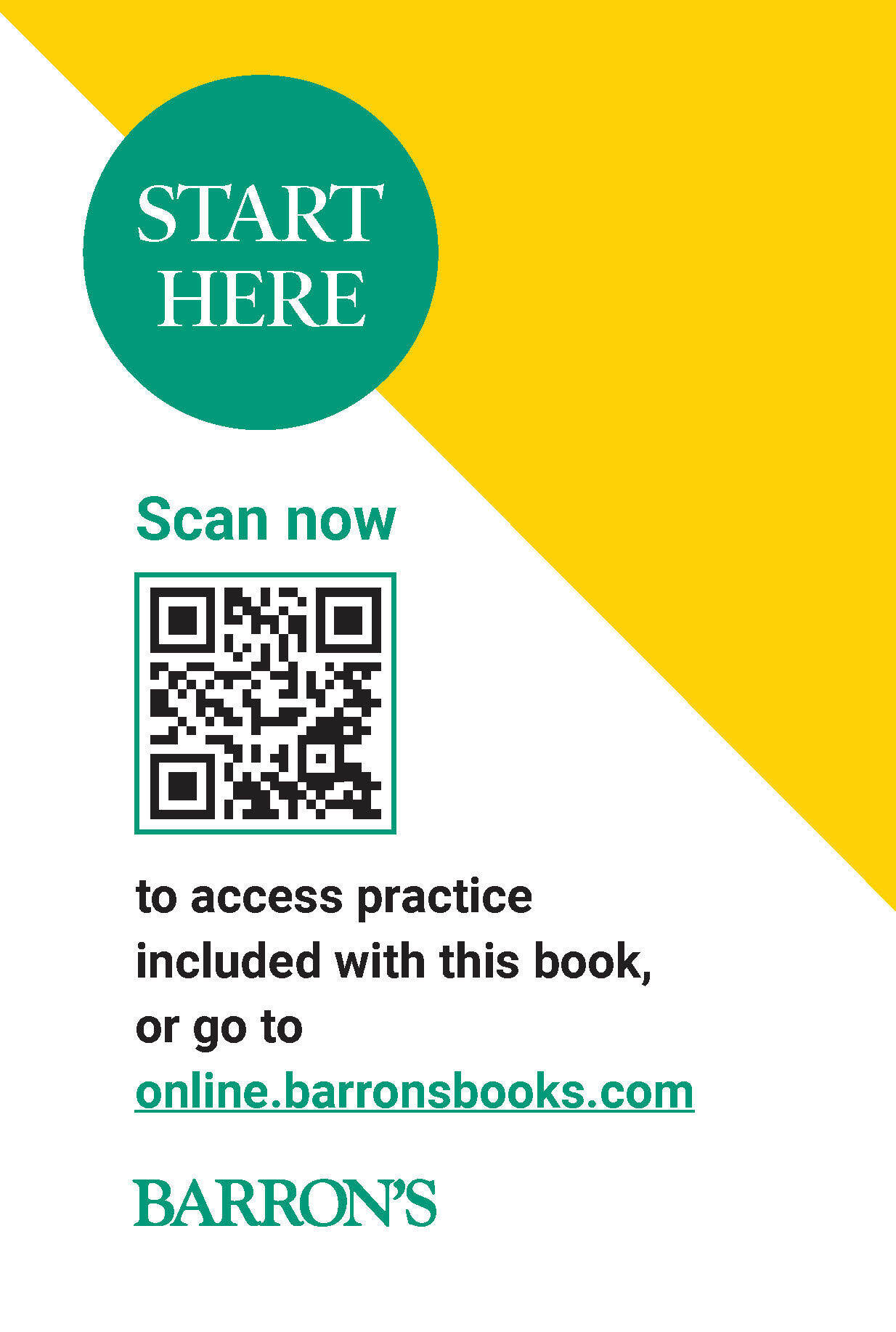
 Copyright 2022, 2018, 2013, 2008, 2000, 1993, 1987, 1971 by Kaplan North America, LLC, d/b/a Barrons Educational Series, Inc. All rights reserved under International and Pan-American Copyright Conventions. By payment of the required fees, you have been granted the non-exclusive, non-transferable right to access and read the text of this eBook on screen. No part of this text may be reproduced, transmitted, downloaded, decompiled, reverse engineered, or stored in or introduced into any information storage and retrieval system, in any form or by any means, whether electronic or mechanical, now known or hereinafter invented, without the express written permission of the publisher. Published by Kaplan North America, LLC, d/b/a Barrons Educational Series 1515 W. Cypress Creek Road Fort Lauderdale, FL 33309 www.barronseduc.com ISBN: 978-1-5062-7119-4 10 9 8 7 6 5 4 3 2 1 Kaplan North America, LLC, d/b/a Barrons Educational Series, Inc., print books are available at special quantity discounts to use for sales promotions, employee premiums, or educational purposes.
Copyright 2022, 2018, 2013, 2008, 2000, 1993, 1987, 1971 by Kaplan North America, LLC, d/b/a Barrons Educational Series, Inc. All rights reserved under International and Pan-American Copyright Conventions. By payment of the required fees, you have been granted the non-exclusive, non-transferable right to access and read the text of this eBook on screen. No part of this text may be reproduced, transmitted, downloaded, decompiled, reverse engineered, or stored in or introduced into any information storage and retrieval system, in any form or by any means, whether electronic or mechanical, now known or hereinafter invented, without the express written permission of the publisher. Published by Kaplan North America, LLC, d/b/a Barrons Educational Series 1515 W. Cypress Creek Road Fort Lauderdale, FL 33309 www.barronseduc.com ISBN: 978-1-5062-7119-4 10 9 8 7 6 5 4 3 2 1 Kaplan North America, LLC, d/b/a Barrons Educational Series, Inc., print books are available at special quantity discounts to use for sales promotions, employee premiums, or educational purposes.